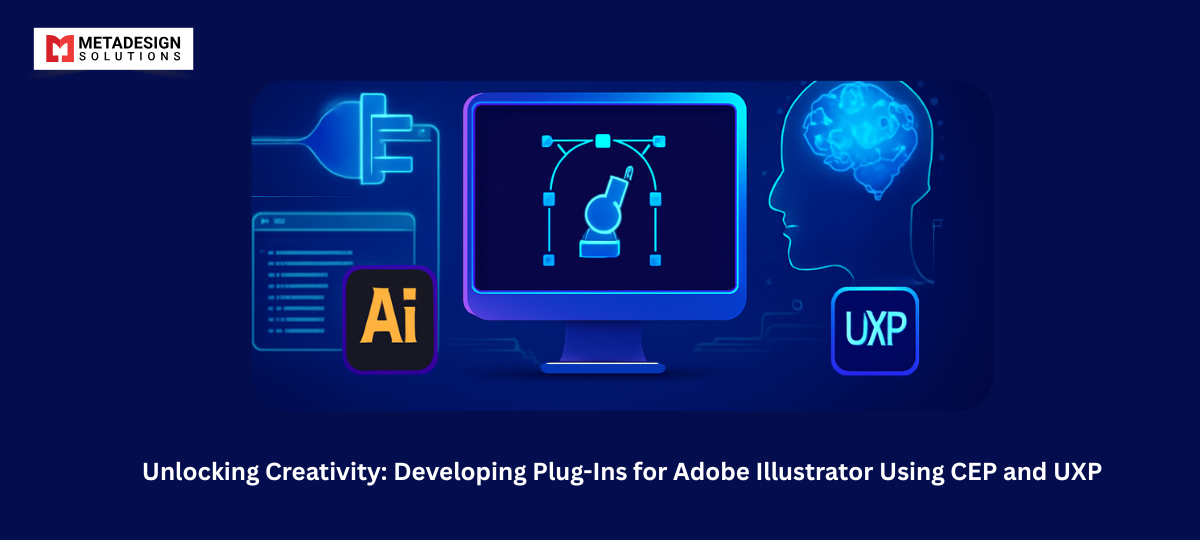1. Introduction to Adobe Illustrator Plug-Ins
Adobe Illustrator is a powerful vector design tool, widely used by professionals for creating stunning artwork. While its out-of-the-box capabilities are impressive, its real potential is unlocked through plug-ins. These extensions allow developers to introduce custom functionality, improve workflows, and enhance creativity.
In this blog, we’ll delve into how developers can build plug-ins for Adobe Illustrator using CEP (Common Extensibility Platform) and UXP (Unified Extensibility Platform).
2. Understanding Adobe CEP and UXP
What is CEP?
The Common Extensibility Platform (CEP) has been Adobe’s long-standing framework for developing extensions across its Creative Cloud applications, including Illustrator. Built on HTML, CSS, and JavaScript, it allows developers to integrate custom functionality seamlessly.
The Rise of UXP
Adobe introduced the Unified Extensibility Platform (UXP) as a modern alternative to CEP. UXP is faster, more secure, and designed for the next generation of plug-ins, offering a robust ecosystem for developers.
3. Adobe Illustrator API: Powering Custom Extensions
The Adobe Illustrator API is a treasure trove for developers, enabling them to interact with the application’s core functionality. Whether you’re manipulating artwork, accessing tool settings, or automating workflows, the Illustrator API is essential for creating meaningful extensions.
4. Advantages of Developing Adobe Illustrator Plug-Ins
- Enhanced User Experience: Tailored solutions improve workflows for designers.
- Business Opportunities: Build and monetize plug-ins for a global market.
- Improved Productivity: Automate repetitive tasks and reduce design time.
- Brand Differentiation: Stand out by offering unique features through plug-ins.
5. Step-by-Step Guide to Developing Plug-Ins with CEP
Setting Up the Environment
- Install Adobe CEP SDK: Download the CEP SDK from Adobe’s website.
- Configure Your Development Tools: Use an IDE like Visual Studio Code for coding HTML, CSS, and JavaScript.
- Set Up the Extension Manifest: Define metadata such as extension ID, version, and host application (Illustrator).
Writing Your First CEP Extension
Below is an example code snippet for a basic CEP extension:
html code:
Migrating from CEP to UXP?
Schedule a session with our Adobe experts to plan a seamless transition.

Save this as index.html and package it into your extension folder. Load it into Illustrator, and you’ll see your custom extension in action!
6. Building UXP-Based Plug-Ins for Adobe Illustrator
Introduction to Adobe UXP Developer Tool
Adobe’s UXP Developer Tool is a command-line interface (CLI) and graphical interface for building modern plug-ins. It simplifies the process of creating, testing, and deploying UXP-based extensions.
Creating Your First UXP Extension
Here’s a snippet to create a simple UXP-based panel:
javascript code:
const { entrypoints } = require("uxp");
const { ui } = require("spectrum");
entrypoints.setup({
panels: {
myPanel: {
create: () => {
const panel = document.createElement("sp-panel");
panel.innerHTML = `<h1>Hello from UXP!</h1>`;
return panel;
}
}
}
});
7. Comparison of CEP and UXP for Adobe Illustrator Extensions
| Feature | CEP | UXP |
| Performance | Moderate | High |
| Security | Basic | Enhanced |
| Ease of Use | Easy for web developers | Modern framework approach |
| Longevity | Legacy support | Future-ready |
8. Challenges and Best Practices in Adobe Plug-In Development
- Challenge: Compatibility across Illustrator versions. Solution: Test extensions on multiple versions.
- Challenge: Performance bottlenecks. Solution: Optimize JavaScript execution and minimize API calls.
- Best Practice: Use a version control system like Git to manage code changes efficiently.
9. Why Choose MetaDesign Solutions for Adobe Plug-In Development?
At MetaDesign Solutions, we specialize in creating custom plug-ins for Adobe Illustrator using both CEP and UXP. With over 300 developers in India, we offer end-to-end Adobe plug-in development services, ensuring seamless integration, optimized performance, and future-ready solutions.Whether you need a simple tool to enhance productivity or a sophisticated extension for advanced functionality, our expertise ensures successful outcomes. Contact us at sales@metadesignsolutions.com to learn how we can transform your ideas into powerful Illustrator plug-ins.10. Conclusion
Developing plug-ins for Adobe Illustrator is an exciting way to unlock creativity and extend the functionality of this powerful design tool. With CEP and UXP, developers have multiple options to create feature-rich extensions. As Adobe transitions to UXP, it’s crucial to stay updated with the latest technologies and tools.Related Keyphrase:
#AdobeIllustrator #IllustratorPlugins #CEP #UXP #AdobeDevelopment #CreativeWorkflows #IllustratorExtensions #PluginDevelopment #CreativeTools #TechForCreatives #UXPDevelopment #AdobeCreativeCloud #DigitalDesign #DesignAutomation #CustomPlugins #CreativeInnovation #IllustratorDevelopment #AdobeAPI #TechInnovation #DesignExtensions #IllustratorTools #SoftwareDevelopment #CreativeSolutions #TechForDesigners #PluginEngineering


